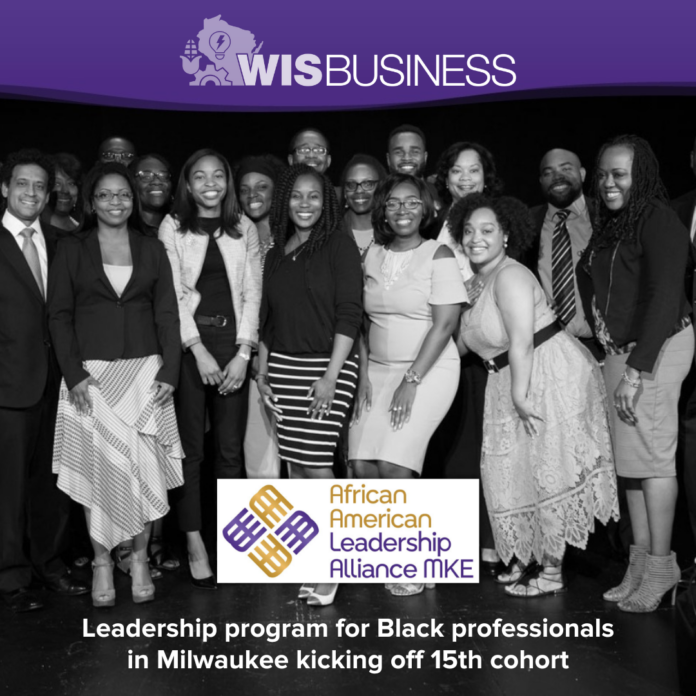A leadership program for Black professionals in Milwaukee is kicking off its 15th cohort this year, helping more participants advance their careers and sharpen critical skills.
That’s according to Angela Adams, interim president of the African American Leadership Alliance of Milwaukee. She spoke yesterday alongside Hispanic Collaborative President Nancy Hernandez during a meeting of the Rotary Club of Milwaukee.
The discussion highlighted persistent disparities for both Black and Hispanic Milwaukeeans compared to other top metropolitan areas in the United States, along with efforts to improve the economic outlook for these underrepresented groups.
Abrams referenced a well-being index that ranks how Black residents of Milwaukee are faring on measures of health, income, poverty, employment, homeownership, education and business leadership. While cities such as Austin, Phoenix and Atlanta top the list, “unfortunately Milwaukee still remains number 50,” she said.
“On the 14 of 44 indicators comprising the index, Milwaukee ranks last or next to last, and it was the worst-performing of any of the metro areas in the index,” she said yesterday. “The worst results are income and poverty, employment, educational attainment and measures of racial disparity.”
She noted Black professionals “remain underrepresented in the top echelons of the Milwaukee private sector,” but added “the data doesn’t tell the whole story.”
Her presentation touted the impact of the African American Leadership Program in the city, which has graduated more than 250 alumni since launching in 2008. Of that number, 85% opt to stay and work in Milwaukee and “be a part of the change,” while 69% of graduates say they’ve progressed in their careers since participating, she said. And more than half are serving on company boards.
Adams, a graduate of the program’s fifth cohort, currently holds a position on the UW Board of Regents.
“So this work does matter, and it is working,” she said. “We do have progress.”
Meanwhile, Hernandez highlighted a similar index for Hispanic residents of Milwaukee. She noted this population is seeing modest improvements in measures of poverty, female employment, homeownership rates and health insurance. But Milwaukee is still dropping in the rankings — from No. 39 to No. 45 between 2017 and 2024.
“While we’ve had positive progress, incremental progress on some of the outcomes related to our Latino population, we aren’t moving as fast as all of these other 50 metros,” she said. “When we think about our region, when we think about the competitiveness of our region … This is an anchor for us. Because we have to be moving at least as fast as they are.”
Based on the seven categories in both well-being indices, Milwaukee ranks in the bottom 10 for employment, income and poverty, education, health and business indicators for Hispanic residents, Hernandez said. Still, she emphasized the “important positive trends” being seen despite the relative decline.
“With further investment and intentionality, we can reach a much more different norm here for our Latino communities and reach regional prosperity,” she said.
Both the AALAM and the Hispanic Collaborative are part of the Metropolitan Milwaukee Association of Commerce’s Region of Choice initiative, which aims to make the region’s workplaces more inclusive and diverse.






